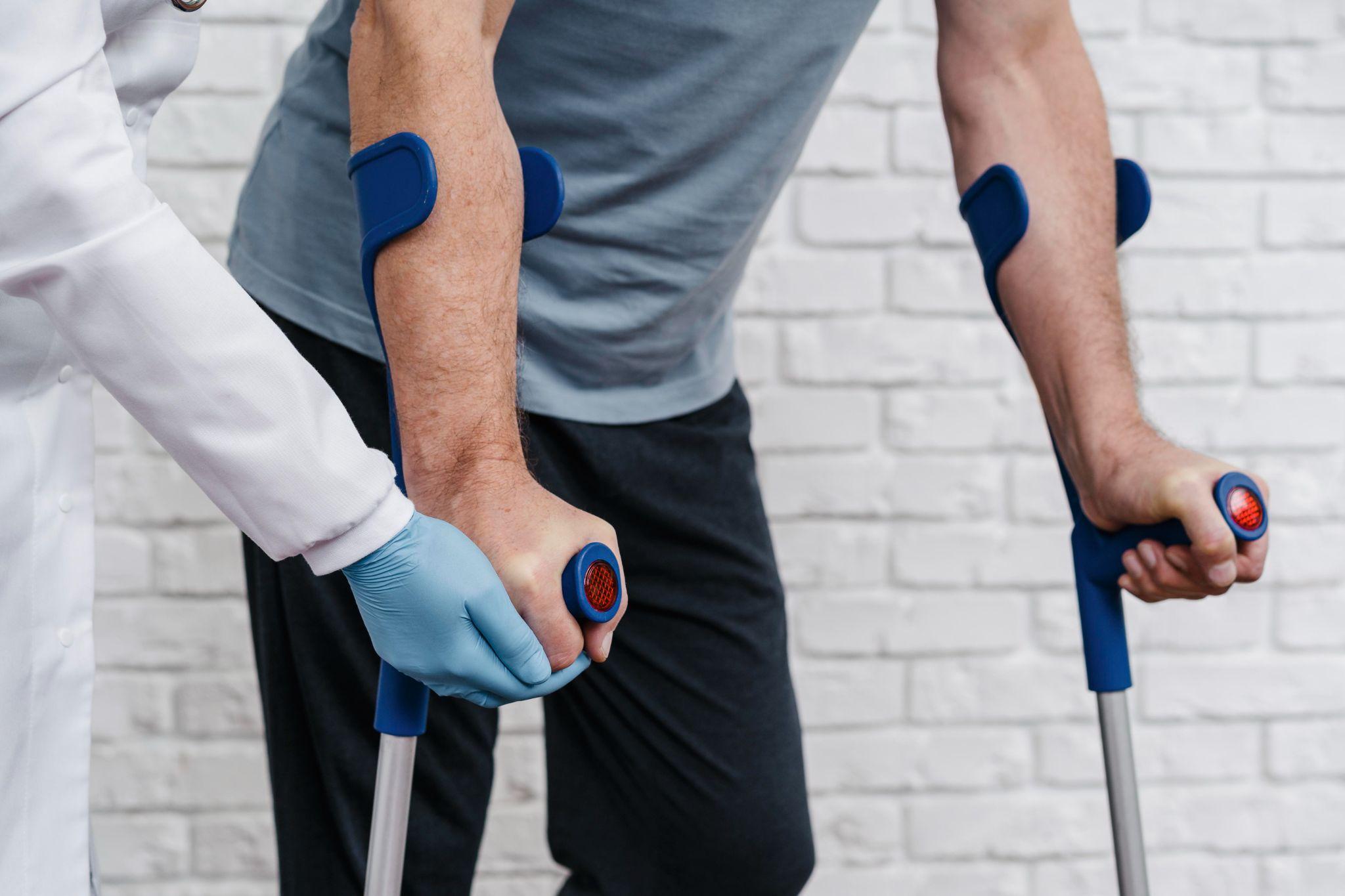Top 5 Joint Replacement Surgery Myths

Joint replacement surgery is one of the most effective treatments for severe arthritis and joint damage.
Joint replacement surgery, hip, knee, or shoulder, is more common now than ever before. It has relieved mobility and made it possible for many to live without constant pain.
But most patients wait due to myths and misconceptions. This leads to delay, more suffering, and lower quality of life.
Here in this article, we will be breaking the top 5 myths regarding joint replacement, providing you with real facts, and making patients feel more at ease in making well-informed decisions after consulting with their orthopedic specialist.
Myth 1 – "Joint Replacement Is Only for the Elderly"
Why do some people believe so?
Because the elderly are more likely to require joint replacement due to wear and tear, the feeling is that it is reserved for old people.
Reality:
- Joint replacement is not confined to old age. Even younger people in their 40s or 50s with severely deformed joints or damage are considered candidates.
- Advances in surgical techniques, implant design, and rehabilitation make the surgery more robust and secure, enabling it for younger patients.
- The goal is not to replace joints merely because of age but to reestablish function, prevent pain, and improve lifestyle.
Thus, age by itself should not preclude you. The decision depends on how bad the joint is, symptoms, and overall health.
Myth 2 – "Joint Replacement Means You'll Never Be Active Again"
Why this myth exists:
Most individuals worry that if one joint has been replaced, they must spend the rest of their life on a couch and not even move a muscle for fear of injuring the implant.
Reality:
- Joint replacement is increasingly done so that patients can move more than they did previously, walking, swimming, cycling, and plenty of low-impact sports are back on the menu.
- High-impact activities (e.g., full-contact sports, heavy jumping) are avoided, though most patients resume normal exercise and fitness routines.
- Proper rehabilitation, stepwise return to activity with observation, and following precautions ensure joint longevity and safe activity.
- Most patients have enhanced mobility and decreased pain and are able to live more actively than before surgery.

Joint replacement improves not just movement but also overall quality of life.
Myth 3 – "Recovery Takes Years"
Why do people believe this?
History and past practice produce an image of a long, open-ended recovery over the years.
Reality:
- Modern surgery techniques, pain control, and rehabilitation procedures have significantly reduced recovery.
- The majority of patients begin walking (assisted) one or two days after surgery.
- Activities of daily living may return in weeks; recovery is typically many months, not years.
- Certain enhanced recovery programs (fast-track or pathways) aim to reduce hospital stay and accelerate rehabilitation.
Surely, the rate of recovery is individual, joint replacement, general health, and adherence to therapy, but rarely in years.
Myth 4 – "Implants Do Not Last Long"
Why has this myth arisen?
Early implants and less advanced materials sometimes failed or wore out more quickly, and so tales of "replacing implants every 10 years" began.
Fact:
- Current implants are engineered to endure 15 to 20 years or more, and typically many more years with proper care.
- Better materials, better design, and more precise surgical positioning all help to ensure longer life.
- The majority of patients never need revision surgery in their lifetime.
- Even when revisions must be made, in most instances, only the modular parts (like the plastic lining) are revised and not the entire joint.
- Thus, implant survival today is far better than has been characterized by archaic myths.
Myth 5 – "Joint Replacement Surgery Is Too Risky"
Why does this concern exist
Undergoing a significant surgery brings to mind visions of complications, infection, problems with anesthesia, loosening of the implant, etc.
Reality:
- Joint replacement is now a routine procedure with great success rates; the majority of studies have demonstrated success in over 90-95% of patients.
- Modern anesthesia, surgical technique, infection prevention, asepsis protocols, and post-operative care all reduce risk.
- Standard surgical risks still exist (infection, clots, nerve injury), but these are unusual if performed by skilled personnel.
- Surgeons assess patient-specific risk variables (age, comorbidities, general health) before prescribing surgery.
- The benefit-to-risk ratio typically favors benefit, especially if joint pain severely limits life.
There is no question that there is a risk, but the risk for severe complications is small with competent hands.

The success rate of joint replacement surgery is very high, with most patients reporting excellent outcomes.
Conclusion
Joint replacement today is safer, more durable, and more successful than most of these myths have painted it to be. The top myths, that it's for only seniors, that exercise is gone forever, that healing takes decades, that implants fail quickly, or that surgery is too dangerous, fail to hold up with today's evidence and experience.
Facts, not fears, must be what inform decisions. If joint pain is keeping you from living the life you deserve, the best course of action is to visit an orthopedic specialist. Ask them to inform you of your individual case, risks, outcomes, and whether you are a good candidate. Armed with accurate information, you can make well-informed decisions about your mobility and health.
Frequently Asked Questions
How old are you when you undergo joint replacement surgery?
There is no fixed "cut-off" age. Of greater importance are the joint condition, the level of pain or disability, and overall health. Patients in their 40s and 50s may be considered if their joints are badly damaged. The choice does not depend on calendar age but on the balance of risks, benefits, and residual life expectancy of the implant.
Can I exercise after joint replacement surgery?
Yes, in fact, safe, supervised exercise is encouraged. Most patients are able to resume walking, cycling, swimming, and low-impact exercise programs. Contact or high-impact sports are to be avoided. The key is to pursue a graduated course of rehabilitation under supervision and follow the guidelines of your surgeon or physiotherapist.
How long does it take to recover fully from joint replacement?
While recovery from the post-acute stage would take a few weeks' time, functional recovery takes a couple of months. The majority of patients can get back to most activities of daily living between 6 and 12 weeks. There may be some residual stiffness or minor symptoms that may persist for a few months. It depends upon the joint replacement, the patient's health status, the rehab program, and other factors.
How many years do knee or hip implants last?
Implants today last 15 to 20 years or more; most last significantly longer in patients who don't overdo it, exercise prudently, and receive good surgical placement. Some never need a revision. Even when wear does occur, typically only part of the implant is revised rather than the entire device.
What are the dangers of joint replacement surgery?
Risks involved are infection, blood clot, bleeding, damage to the nerve or vessel, loosening of the implant, dislocation (in the hip), stiffness, and anesthetic reaction. But all these, in today's practice, are fewer. Risks are considered by surgeons prior to procedures. Post-operative management, the use of sterilized techniques, and rehab reduce most risks.
Is joint replacement useful in younger patients?
Yes, in the majority of cases, there is damage to the joint that leads to pain, disability, and impairment of quality of life. Younger patients will benefit from increased mobility, less pain, and the ability to function in life activities. Complications include a greater chance of implant wear over a long period of time, but modern implants and designs reduce the risk. The choice should weigh life expectancy, activity level, risks, and requirements for revision.